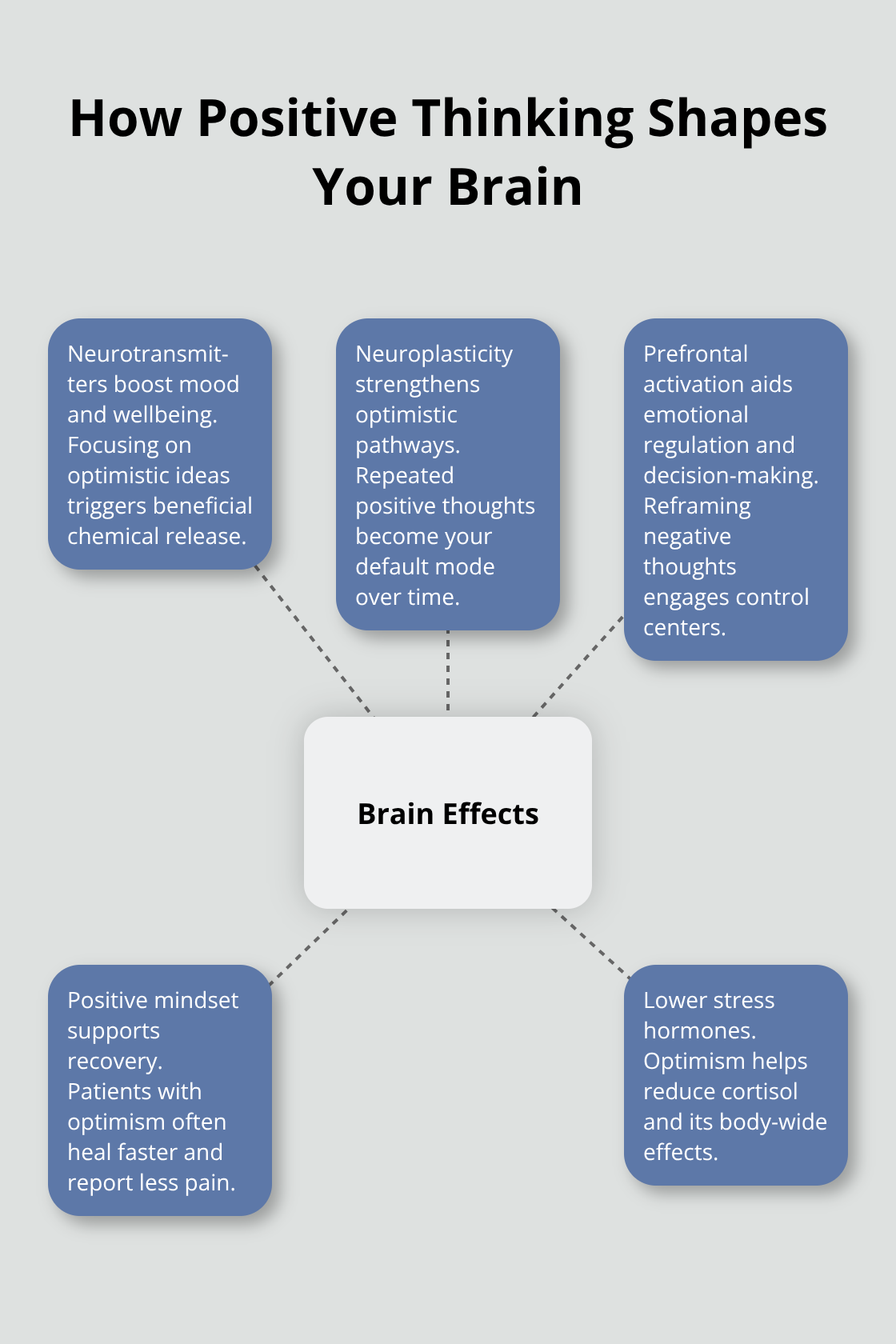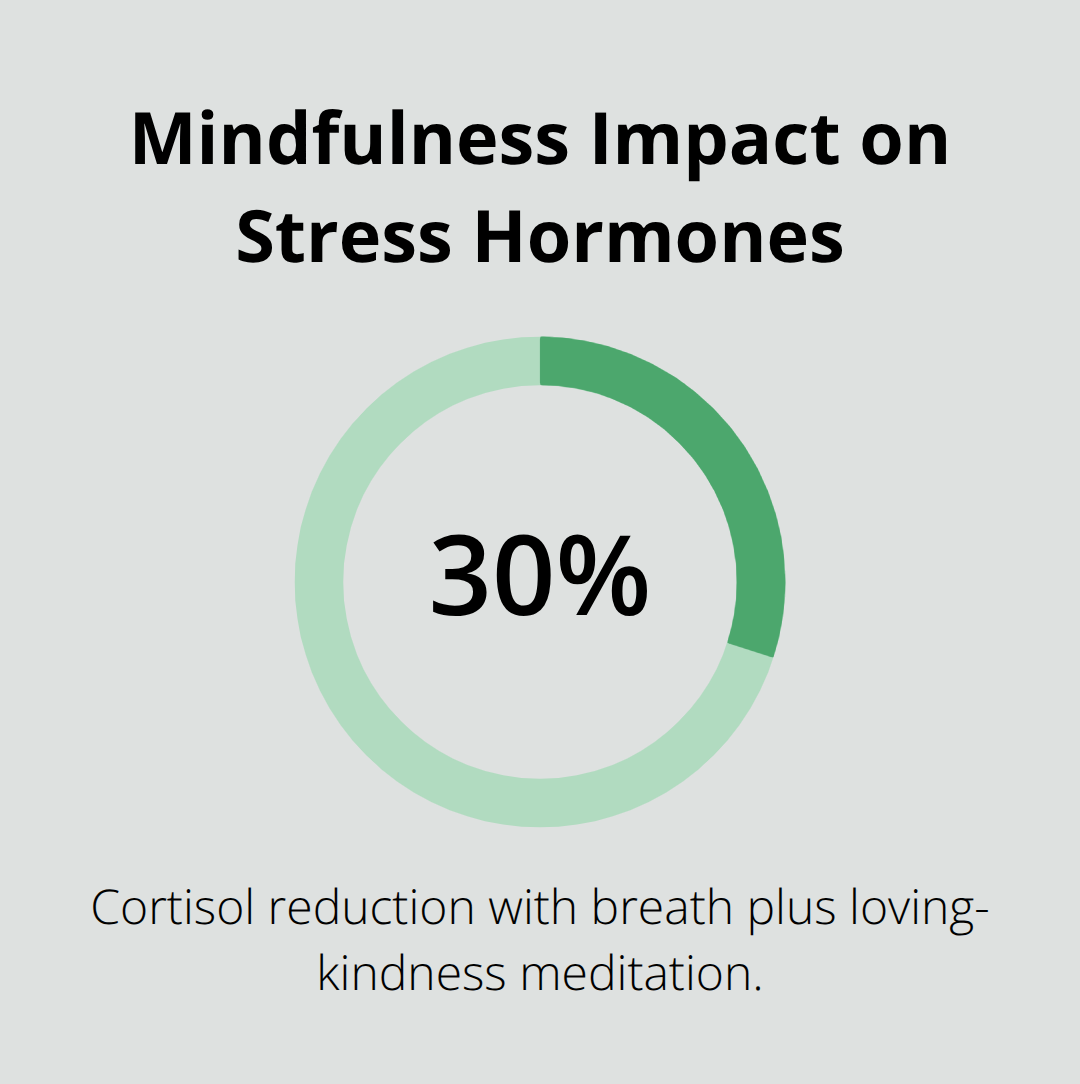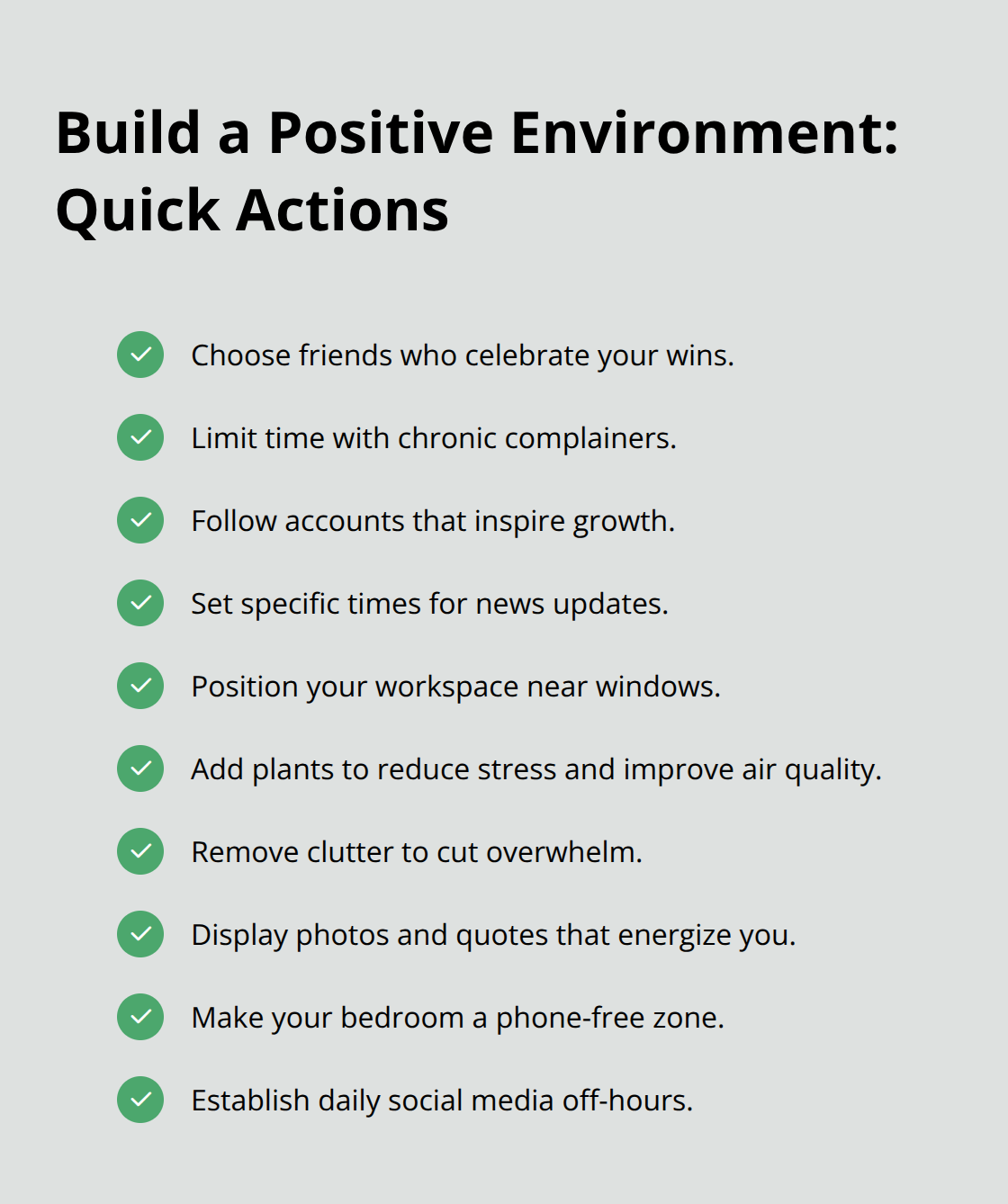Positivity and optimism aren’t just feel-good concepts – they’re scientifically proven pathways to better mental and physical health. Research shows that optimistic people live longer, recover faster from illness, and experience less stress.
At Global Positive News Network, we believe everyone can learn these life-changing skills. The strategies in this guide will help you build lasting habits that transform your daily experience and overall wellbeing.
How Positive Thinking Affects Brain Chemistry
Your Brain Rewires Itself for Happiness
Positive thoughts trigger measurable changes in your brain structure and chemistry. When you focus on optimistic ideas, your brain releases neurotransmitters that boost mood and create feelings of wellbeing. Research shows that serotonin inhibits dopamine release and modulates other brain chemicals. The University of Pennsylvania discovered that people who wrote down three good things daily for one week showed increased happiness levels that lasted six months.
This happens because positive experiences strengthen neural pathways through neuroplasticity. Your brain makes optimistic thoughts its default mode over time. Each positive thought creates new connections between neurons, while negative thought patterns weaken from lack of use.
Mental Health Benefits Start Within Days
Research from Harvard Health reveals that optimistic people have reduced risk of heart disease, stroke, and declines in lung capacity and function. Studies suggest these protective effects extend across multiple health outcomes.
These benefits stem from optimism’s ability to reduce cortisol, your primary stress hormone. Mayo Clinic research confirms that positive thinkers experience significantly lower rates of depression and anxiety.
Your Brain Responds to Thought Patterns Immediately
The key lies in how you reframe negative thoughts the moment they arise. Instead of thinking “I always mess up,” shift to “I learned something valuable from this experience.” This simple switch activates your prefrontal cortex-the brain region responsible for emotional regulation and decision-making.

Physical symptoms improve rapidly too. Studies show that optimistic patients recover faster from surgery and report less pain during treatment. Your brain’s response to positive thoughts creates a cascade of beneficial changes throughout your entire body.
These neurological changes set the foundation for the practical techniques that can transform your daily mental health outcomes.
Daily Practices to Build Optimism
Start Your Gratitude Practice With Three Specific Items
Gratitude practice transforms your brain chemistry within weeks, but most people approach it incorrectly. Research from the University of California shows that people who write down three specific positive events daily can increase well-being after just one week. The key lies in detail and emotion.
Instead of basic thanks like health or family, record precise moments: your colleague’s helpful advice on Tuesday’s project, the warm coffee that energized your morning meeting, or your neighbor’s smile during yesterday’s walk. Each entry should include why this moment mattered to you personally. Studies reveal that people who write detailed gratitude entries show greater increases in life satisfaction than those who use generic lists.
Transform Your Mental State Through 10-Minute Mindfulness Sessions
Mindfulness meditation rewires your brain for positivity faster than any other technique. Harvard Medical School research demonstrates that just eight weeks of daily 10-minute meditation sessions increase gray matter in areas associated with emotional regulation and decrease activity in the amygdala (your brain’s fear center).
The most effective approach combines breath focus with loving-kindness meditation. Spend five minutes on your breath, then five minutes as you send positive thoughts to yourself, loved ones, and even difficult people in your life. This specific combination releases oxytocin and reduces cortisol levels by up to 30%.

Physical Exercise Amplifies Mental Health Benefits
Physical exercise amplifies these benefits dramatically. The American College of Sports Medicine reports that 30 minutes of moderate exercise three times weekly reduces depression symptoms as effectively as antidepressants in many cases. Morning workouts prove most beneficial for mood enhancement because they boost endorphins when cortisol levels naturally peak.
Walking, swimming, or cycling work best for sustained optimism compared to high-intensity training. These activities create consistent endorphin release without the stress response that intense workouts can trigger.
These daily practices create the foundation you need, but your environment plays an equally important role in maintaining long-term optimism.
Creating a Positive Environment
Choose Your Social Circle Strategically
Your social circle directly determines your mental health outcomes more than any other factor. Stanford University research shows that investments in happy employees drive top-line improvements for companies, as happier employees are more efficient and creative. The impact works both ways: individuals surrounded by pessimistic people experience increased cortisol levels and report more negative thoughts daily.
You must actively choose your relationships rather than accept whoever happens to be around. Limit time with chronic complainers, energy vampires, and people who dismiss your goals. Instead, seek friends who celebrate your wins, offer constructive feedback, and maintain their own positive practices. Professional networks, hobby groups, and volunteer organizations attract naturally optimistic people who share your values.
Transform Your Media Diet
Media consumption shapes your brain chemistry within hours of exposure. Research shows that a nonstop cycle of negative news does more than just upset you-it can fundamentally alter your brain’s stress response.
Replace doom-scrolling with content that inspires action and growth. Follow accounts that share scientific breakthroughs, human interest stories, and practical life improvements. Set specific times for news consumption rather than constant updates throughout your day. This approach protects your mental state while keeping you informed.

Design Your Physical Space for Optimism
Your physical space amplifies these effects through environmental psychology. Natural light increases serotonin production, while plants reduce stress hormones and improve air quality. Position your workspace near windows, add greenery to every room, and use warm lighting in evening hours.
Remove clutter systematically because visual chaos creates mental overwhelm and decision fatigue. Display photos of meaningful moments, quotes that energize you, or artwork that lifts your emotional state. Each element in your environment either supports or undermines your positive mindset.
Set Clear Boundaries with Negative Influences
Boundaries protect your mental energy from people and situations that drain your optimism. Practice saying no to social events that consistently leave you feeling depleted. Limit conversations with people who focus exclusively on problems without seeking solutions.
Create physical boundaries too. Designate your bedroom as a phone-free zone and establish specific hours when you disconnect from social media. These boundaries give your brain time to process positive experiences and maintain the optimistic patterns you’ve worked to build.
Final Thoughts
Positivity and optimism require consistent daily action across three key areas: you must rewire your brain through gratitude and mindfulness, maintain physical exercise for mood enhancement, and create supportive environments. These strategies work together to produce measurable changes in brain chemistry within weeks. The long-term benefits extend far beyond improved mood.
Research demonstrates that optimistic people experience reduced risk of cardiovascular disease, faster recovery from illness, and increased lifespan. Your immune system strengthens, stress hormones decrease, and relationships improve as you attract more positive connections. Success depends on how you treat positivity as a skill rather than a personality trait (not an inborn characteristic).
Start with one practice – whether gratitude notes, 10-minute meditation sessions, or boundary limits with negative influences. Build consistency before you add new techniques. We at Global Positive News Network support your journey with uplifting content that reinforces positive habits, and these practices create an upward spiral of wellbeing that transforms every aspect of your life.




